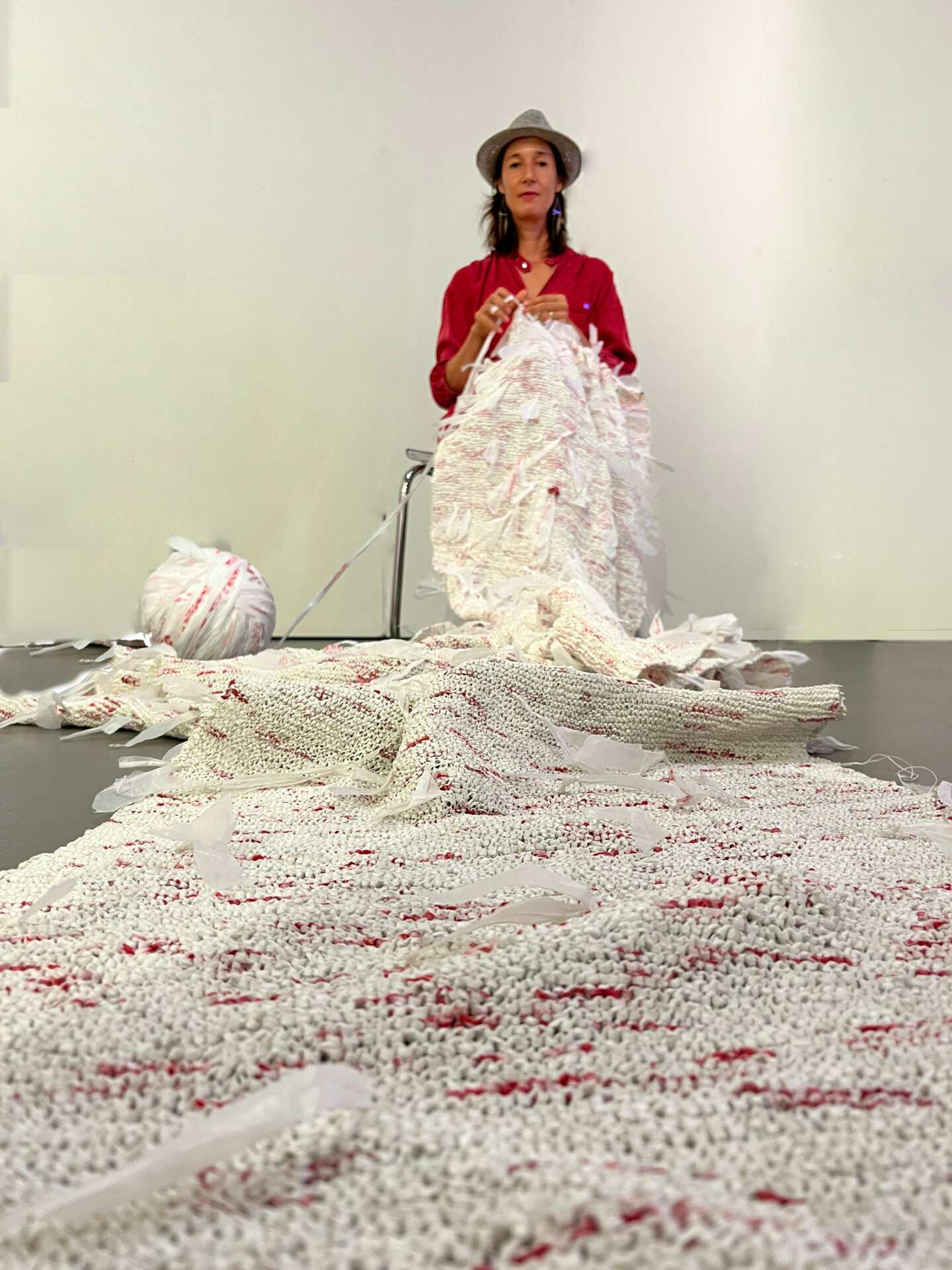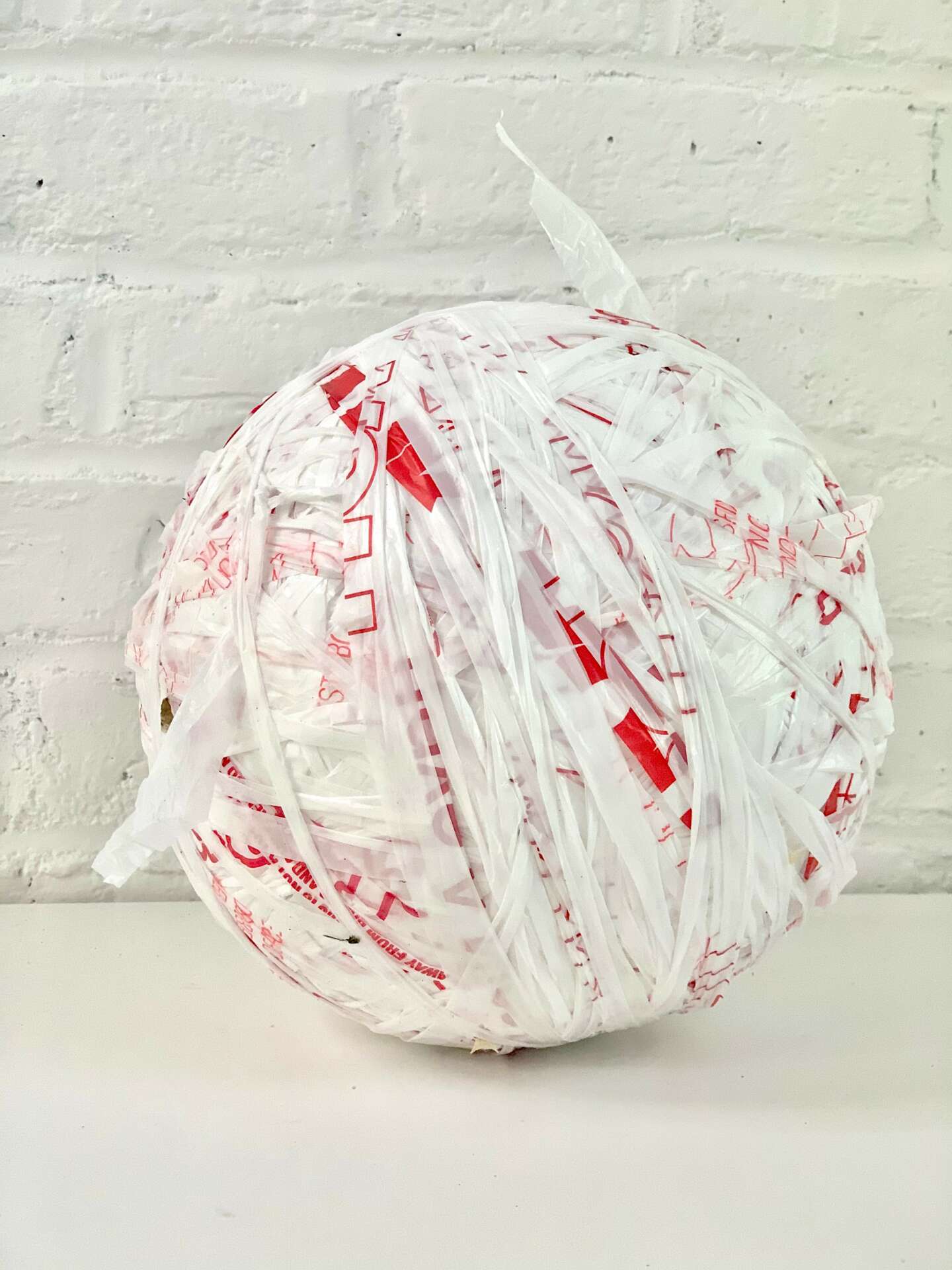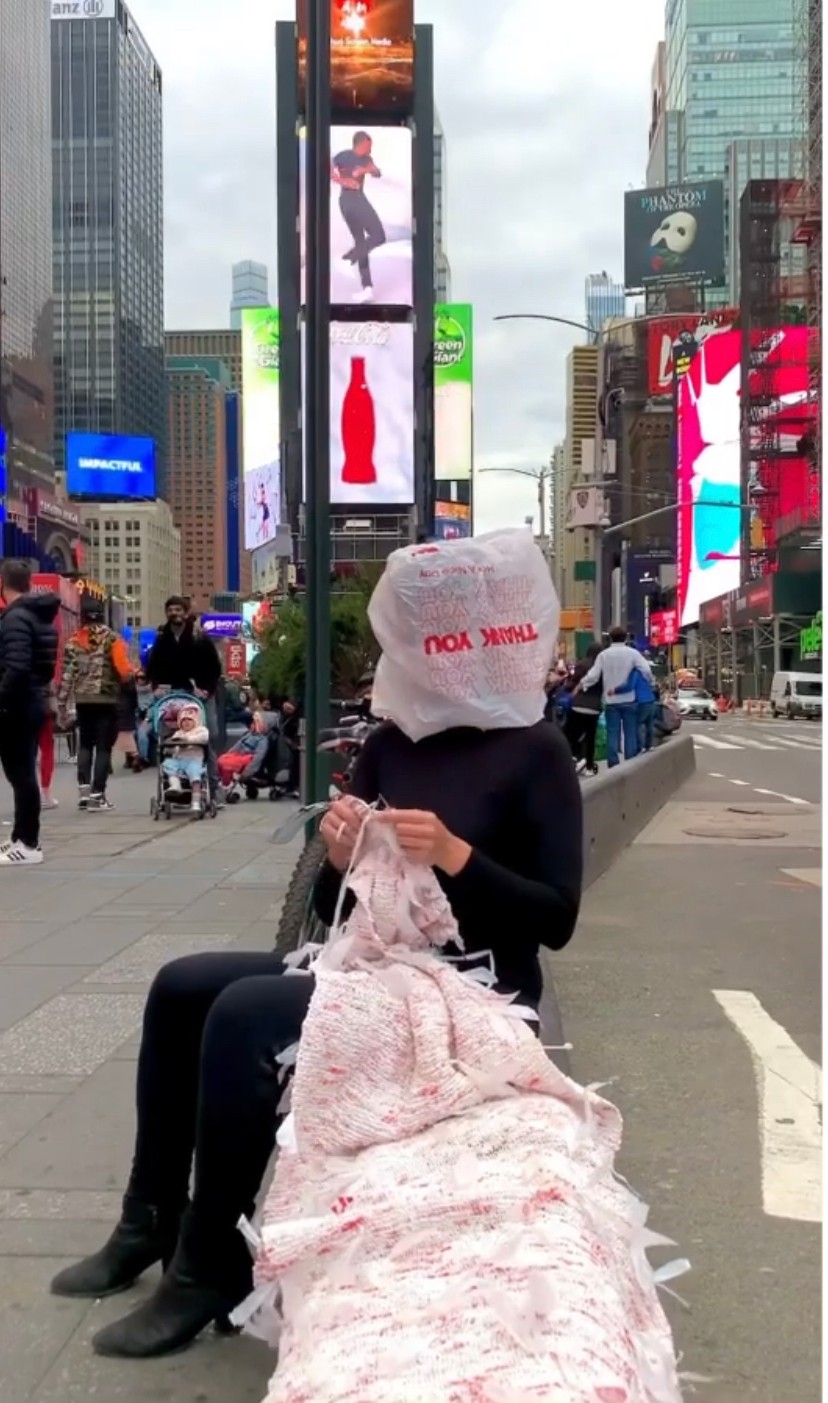We recently connected with Capucine Bourcart and have shared our conversation below.
Hi Capucine, thanks for joining us today. Did you always know you wanted to pursue a creative or artistic career? When did you first know?
I never thought of becoming a professional artist; it happened gradually. I come from a creative family where music, drawing, painting, and crafting were integral to our daily life, serving as sources of inspiration. Initially, I pursued art as a hobby while working in press and marketing in France and then in New York. Over time, my involvement in art grew, and I slowly began exhibiting my work.
It wasn’t until later in life that I decided to take it more seriously. I found myself unemployed at one point, and while it initially seemed like an unfortunate turn of events, it turned out to be a stroke of luck and a clear sign to fully embrace my artistic journey. After my first exhibition, it became even more evident that pursuing art was my true calling. I transitioned into becoming a self-taught artist, continuously honing my skills, first by taking classes at the International Center of Photography where I also became a teacher assistant. Eventually, I made the decision to further my education by pursuing a Master’s in Arts in New York, which I recently completed. While sustaining a career in the arts can be challenging, it’s the only path where I feel truly in harmony with myself.

As always, we appreciate you sharing your insights and we’ve got a few more questions for you, but before we get to all of that can you take a minute to introduce yourself and give our readers some of your back background and context?
As a gleaner, I collect various materials from my domestic life, travels, or even from the streets. Often ordinary, overlooked and considered discarded or even repulsive they act as ‘skins’ or ‘traces’ of our daily and routine life, carrying the imprints of our existence. I imbue these remnants with value, dignity and identity through craft techniques such as felting, sewing, knitting and embroidery.
Drawing inspiration from my family’s history and my own observations, I aim to reveal the relationship between intimate and public, camouflage and exposure and to make visible the hidden, using various mediums, such as painting, drawing, cutting, and installation. I tear apart the ‘packaging’ to expose the richness of what I experiment as existence, even when it does not conform to norms. It is an invitation to reflect on the value of the silenced aspects, to recognize beauty in the unexpected, and to celebrate the diversity of lives hidden behind appearances.
In March 2020, plastic bags were banned in New York State. As a result, I began to view this everyday and invasive object differently. Because of the ban, I decided to work with it. So, I started knitting the common and iconic white plastic bags with red “Thank you” lettering, and I named it “The Blanket.” The plastic bags I knit are the ones I had hoarded from my local supermarket. Through this performance piece, “The Blanket,” I question whether banning plastic bags means we will actually stop using them. I also wonder how long the knitted object will be when it’s finally finished if I stop knitting them. As of today, “The Blanket” is 17 feet long and comprises about 500 plastic bags. I regularly perform in art venues, and the conversations that emerge from this project are always enriching. So far, this has been the most fulfilling project I have created because it engages the audience significantly.


Any insights you can share with us about how you built up your social media presence?
I utilize Instagram and maintain a website to promote my work. I make an effort to post regularly on Instagram, infusing a personal touch into my content. I also reach out to people on Instagram who share similar interests, such as medium, materials, and backgrounds. As for my art projects, they consistently receive updates on my website.
Additionally, I actively participate in art openings and events, providing valuable opportunities to connect with fellow artists, curators, and gallery owners. Through these experiences, I’ve come to realize that while virtual promotion is valuable, direct in-person connections are often more efficient and impactful. Most importantly, I seek out events and individuals closely aligned with my artistic practice and perspective, opting for a niche approach rather than a broad one.


For you, what’s the most rewarding aspect of being a creative?
For me, the most rewarding aspect of being an artist or creative is the exploration of materials and the process of working with them without knowing what will emerge. It’s the element of unpredictability and the sense of discovery. I am more interested in the process than in the end result. When I engage with different materials, whether it’s cat hair, plastic bags, pigeon feathers, I’m constantly pushed to experiment, innovate, and challenge them. This process allows me to tap into my imagination and push the boundaries of what I can create. The joy and excitement of not knowing the final outcome and allowing the materials to guide me is a unique and exhilarating experience.


Contact Info:
- Website: www.capucinebourcart.com
- Instagram: @capucinebourcart
- Linkedin: https://www.linkedin.com/in/capucine-bourcart-8265604/
Image Credits
Capucine Bourcart


